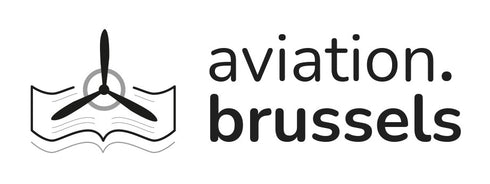B - 26 MARAUDER at War
Product image 1

Product image 2

Product image 3

Product image 4

Product image 5

Product image 6

Product image 7

Product image 8

Product image 9

Prix régulier 70,00 € TTC 6%
This wonderful book, which contains many black and white photographs, is about one of the most iconic American twin - engined medium bomber in service during the Second World War : the Martin B - 26 Marauder.
Caractéristiques
| Format | 30 x 23 x 2 cm |
| Nbr. de pages | 192 |
| Finition | Cartonné |
| Particularités | Jaquette abîmée |
| Année d’édition | 1978 |
| Langue | Anglais |
| Etat du livre | Très bon état |
| Auteur | Roger A. Freeman |
| Collection / Série | At War |
| Editeur | Ian Allan Ltd |
Description
The story of the B - 26 Martin Marauder is one of the most extraordinary of any warplane. When introduced in 1940 it was the most advanced medium bomber in the world, but it required skilled handling which it did not receive from many of the hastily trained pilots and mechanics when America entered World War II. Mechanical failures have brought the Marauder a reputation of being too dangerous to fly, and early combat operations were marked by one disaster after another.
Then a change of tactics and the determination of Marauder crews in North Africa and England brought an extraordinary reversal of fortune. Illustraded by 250 photographs - the majority published for the first time - B - 26 Marauder at War gives a fascinating insight into Marauders and Marauder men.
Roger A. Freeman ( May 11th, 1928 – October 7th, 2005 ) was born in Ipswich, Suffolk ( England, Great Britain ). He grew up on the family farm in Dedham, Essex ( England, Great Britain ).
In 1943, Martin B - 26 Marauder bombers of the U.S. Eighth Air Force’s 386th Bomb Group arrived at Boxted airfield – less than two miles away – sparking Freeman’s lifelong fascination with the wartime U.S.A.A.F. operating from Britain. When his father was granted permission to cut the airfield’s grass for haymaking, the young Freeman made the most of opportunities to examine the aircraft and befriend personnel on the base.
After the war, Freeman continued to work for his father and began writing about agriculture for local publications including the Essex County Standard. He also began to impart his knowledge about the wartime U.S.A.A.F. with articles for aviation magazines and started to collate material for his planned book. Much of this included official documents sourced from the United States as well as personal accounts and photographs from U.S.A.A.F. veterans.
Taking over the family farm in 1959, it would be another 11 years before Freeman could finish his book, a task in which he was assisted by his wife, Jean, whom he married in 1956. The book, entitled The Mighty Eighth, was an instant success and has been translated into several languages. His overall output of some 60 books also included works about the wartime Royal Air Force, individual aircraft studies, airfield histories and profiles of U.S.A.A.F. units – including the Boxted - based 56th Fighter Group of Freeman’s youth. Aside from aviation, he also wrote books in the rural dialect local to the Dedham area, including I Mind the Time : Country Goings - on and That Were Like This Here.
( source : Wikipedia )
Then a change of tactics and the determination of Marauder crews in North Africa and England brought an extraordinary reversal of fortune. Illustraded by 250 photographs - the majority published for the first time - B - 26 Marauder at War gives a fascinating insight into Marauders and Marauder men.
Roger A. Freeman ( May 11th, 1928 – October 7th, 2005 ) was born in Ipswich, Suffolk ( England, Great Britain ). He grew up on the family farm in Dedham, Essex ( England, Great Britain ).
In 1943, Martin B - 26 Marauder bombers of the U.S. Eighth Air Force’s 386th Bomb Group arrived at Boxted airfield – less than two miles away – sparking Freeman’s lifelong fascination with the wartime U.S.A.A.F. operating from Britain. When his father was granted permission to cut the airfield’s grass for haymaking, the young Freeman made the most of opportunities to examine the aircraft and befriend personnel on the base.
After the war, Freeman continued to work for his father and began writing about agriculture for local publications including the Essex County Standard. He also began to impart his knowledge about the wartime U.S.A.A.F. with articles for aviation magazines and started to collate material for his planned book. Much of this included official documents sourced from the United States as well as personal accounts and photographs from U.S.A.A.F. veterans.
Taking over the family farm in 1959, it would be another 11 years before Freeman could finish his book, a task in which he was assisted by his wife, Jean, whom he married in 1956. The book, entitled The Mighty Eighth, was an instant success and has been translated into several languages. His overall output of some 60 books also included works about the wartime Royal Air Force, individual aircraft studies, airfield histories and profiles of U.S.A.A.F. units – including the Boxted - based 56th Fighter Group of Freeman’s youth. Aside from aviation, he also wrote books in the rural dialect local to the Dedham area, including I Mind the Time : Country Goings - on and That Were Like This Here.
( source : Wikipedia )










